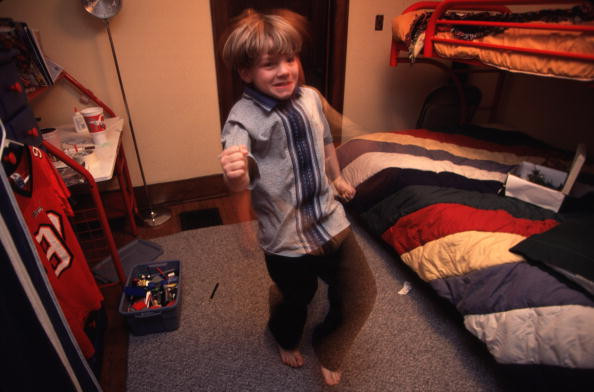ADHD medication side effects: Drugs given to children appear to weaken bone density

Taking medication against attention-deficit hyperactivity disorder (ADHD) appears to weaken bone density in children, with potential long term health problems, a study has claimed.
This is the conclusion of the study presented on 3 March at the Annual Meeting of the American Academy of Orthopaedic Surgeons. In the USA, 6.4 million children were diagnosed with ADHD in 2011, and more than half of them took some form of medicine to act against the disorder. These findings may have far-reaching consequences, affecting many young patients.
Led by Dr Jessica Rivera, the research looks at the case of 5,315 children diagnosed with ADHD, whom they found through the CDC's National Health and Nutrition Examination survey. They compared the health of those who did not report taking any medicine to those who did.
Low bone density
According to their results, the scientists say that children who took ADHD medication (sold under the names Ritalin, Focalin, Dexedrine, Strattera or Vyvanse) had a lower bone density in the femur, the lumbar spine and the femoral neck.
Around a quarter of them had the symptoms of osteopenia, or low peak bone density. This is a particularly high proportion, especially when compared with the group of ADHD affected children who were not taking any medicine. Although there is no evidence to suggest that this can lead to bone diseases in later life, such as osteoporosis, the researchers believe these findings indicate there could be a long-term risk of poor bone health for young people taking ADHD medication.
Indeed, bones acquire their solidity and mass during childhood, and the weakness caused by the drugs could interfere with that process.
Different hypothesis
The researchers have yet to pinpoint the exact reason of why the medication acts in such a way on the bones, but they have come up with different hypothesis. The first could be that taking it poses gastro-intestinal problems and decrease the appetite, thereby reducing the quantities eaten by the child and the calcium intake. Another option is that the drug targets the sympathetic nervous system which is crucial for bone regeneration.
"This is an important step in understanding a medication class, that is used with increasing frequency, and its effect on children who are at a critical time for building their bones," said Rivera. She and her team hope to do more research to uncover the roots of the problem an come up with an alternative for children suffering from ADHD.
Facts about ADHD
The attention-deficit hyperactivity disorder, commonly referred to as ADHD affects about 5% children in the US, and between 2 % and 5 % of children in the UK. This makes it the most common behavioural disorders in both countries.
Symptoms include inattentiveness, hyperactivity and impulsiveness and most generally occur in people with learning difficulties. It is often diagnosed in children between 6 and 12 years old, and symptoms may improve over time, although adults may still experience some difficulties. Boys are more commonly diagnosed than girls.
Causes of ADHD are not well understood, but risks factors include premature births, smoking or drinking by the mother while pregnant, or having a low birth weight.
There is no cure, but the disorder can be well managed with support, therapies and/or medication. Children diagnosed with the condition may receive cognitive behavioural therapy, which has been shown to help in many cases.
© Copyright IBTimes 2025. All rights reserved.






















